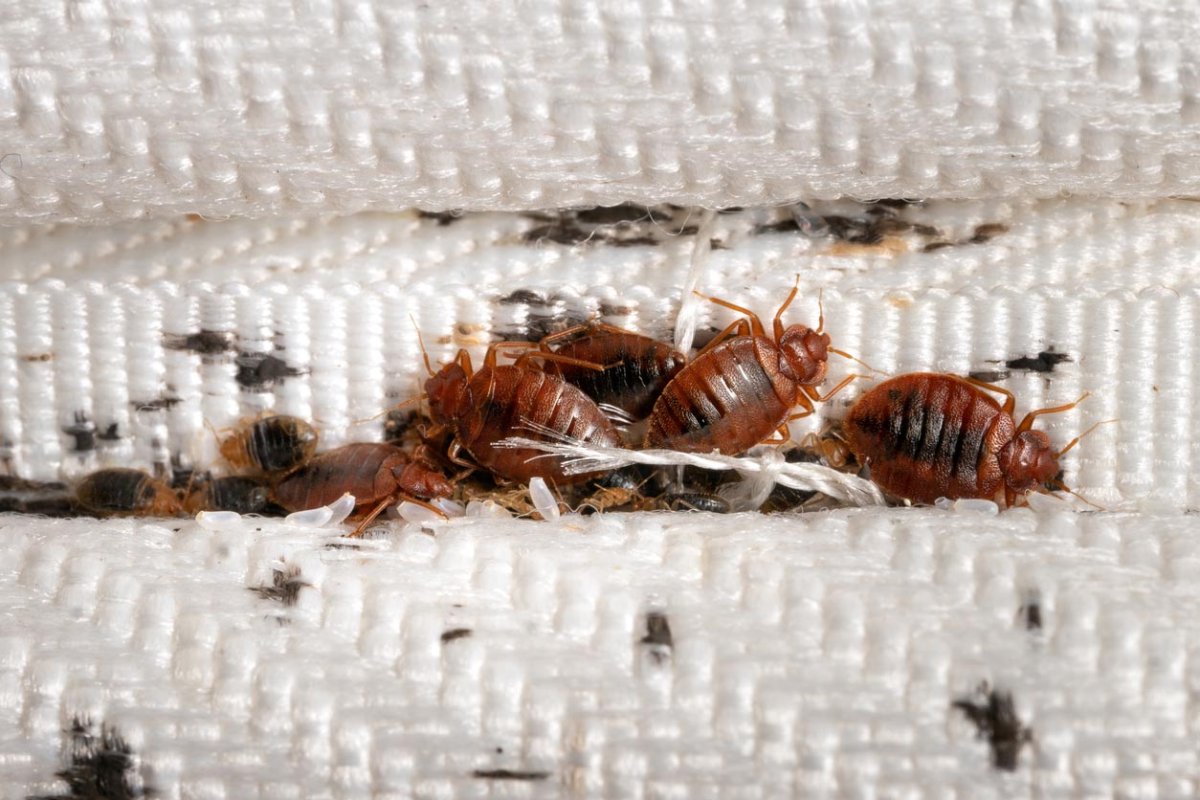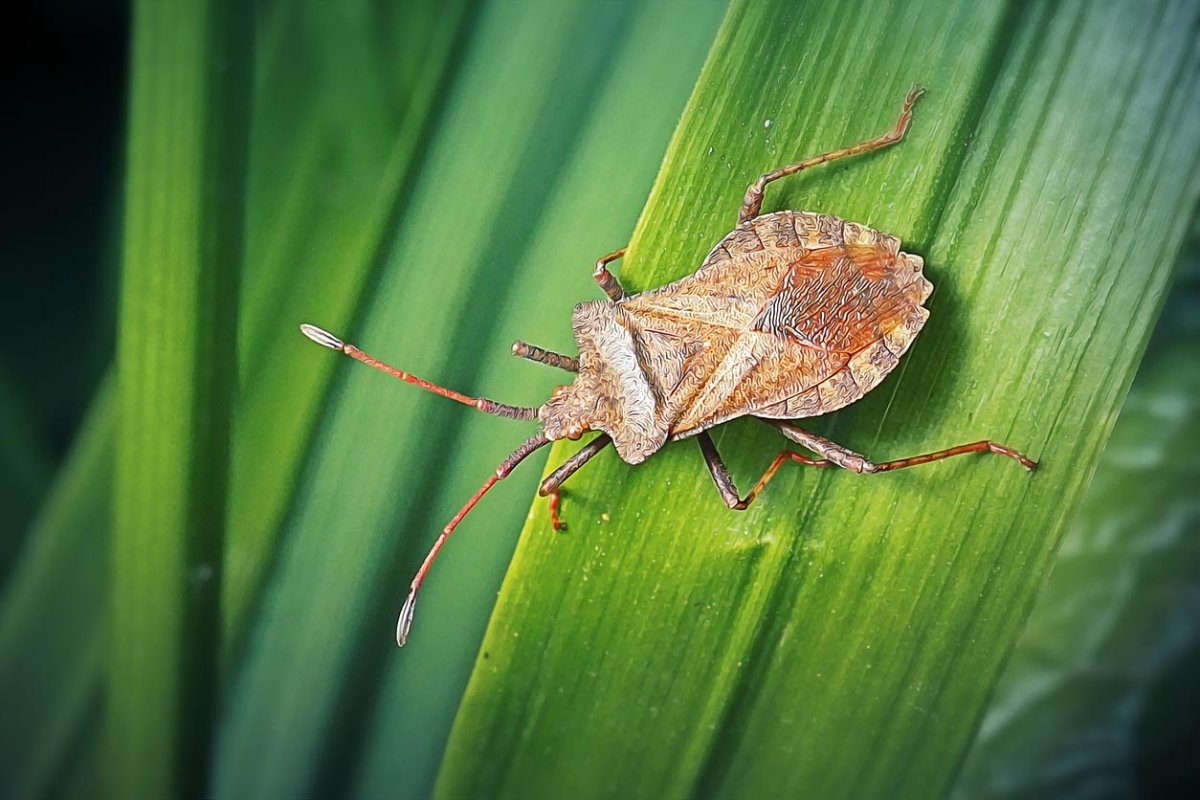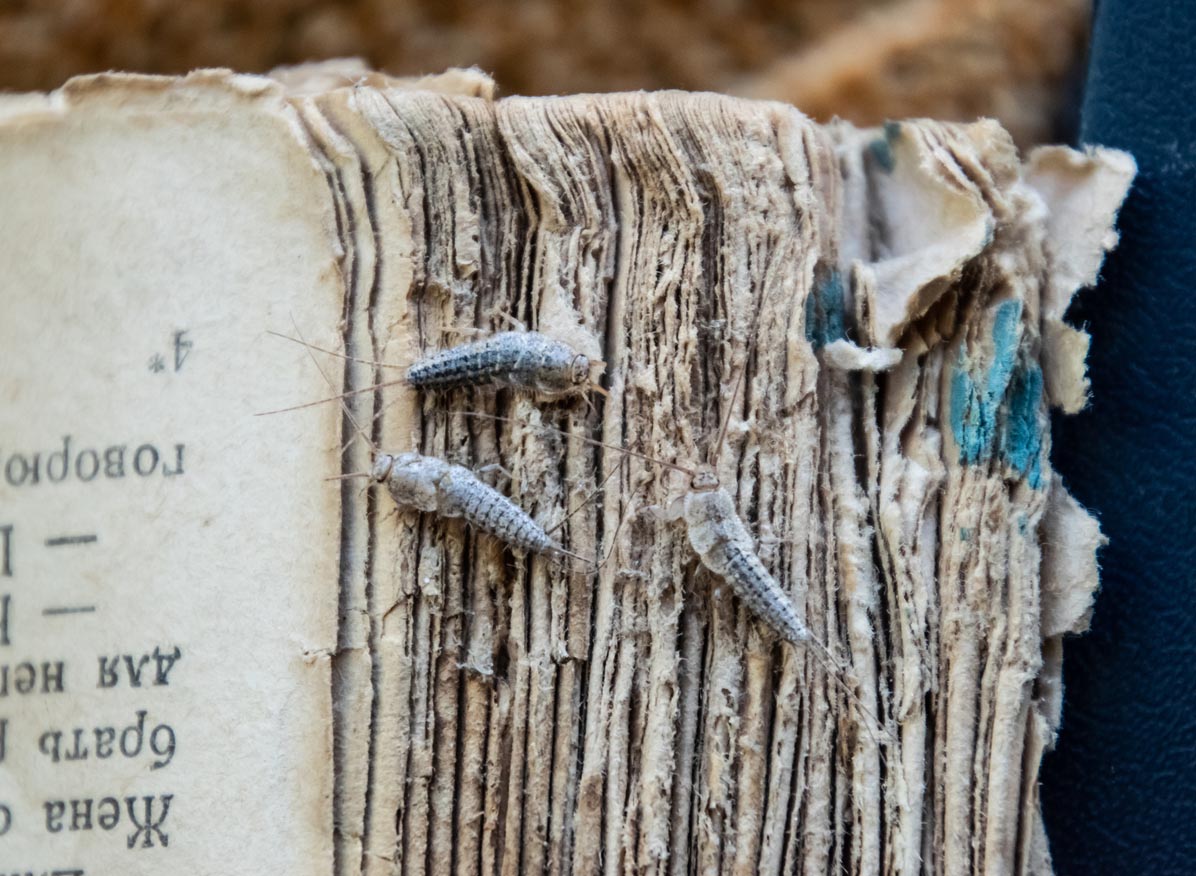

We may earn revenue from the products available on this page and participate in affiliate programs. Learn More ›
What You Need to Know
- Some of the most common pests that leave brown stains on the walls are stink bugs, bed bugs, boxelder bugs, cockroaches, and silverfish.
- The appearance of brown stains can make it easier to identify what type of pest you have.
- If you have an infestation, it’s generally best to have a pest control specialist identify and remove any pests.
- Once an infestation has been dealt with, brown stains on walls can be removed by scrubbing gently with a mild soap.
Q: I’ve been seeing brown stains on my walls that seem to be coming from some kind of insect. What bugs are causing the stains, and how can I get rid of the mess?
A: It’s true that various types of bugs leave brown stains on walls. These mysterious brown stains are most often caused by stink bugs, bed bugs, boxelder bugs, cockroaches, or silverfish, but it may take some additional investigation to determine which pest you have.
“Stains on walls can serve as clues that a problem exists, potentially alerting homeowners to issues they may not be aware of,” says Scot Hodges, vice president of technical services and professional development at Arrow Exterminators in Atlanta, GA. “However, in most cases, the presence of pests has already been observed. While relying on stains to identify a problem can be helpful, it’s just one clue and needs to be combined with other findings to determine if there’s a pest infestation in the home.”
When residents can identify which insects are likely culprits—and whether there’s a full-blown infestation—they can take the appropriate actions to eliminate the pests for good. This may involve calling one of the best pest control companies, such as Orkin or Terminix.

While there is an abundance of bugs that leave a sticky residue in a house, these five are the most common.
1. Stink bugs secrete trails of brownish-orange fluid that has an unpleasant odor.
Stink bugs—more specifically the brown marmorated stink bug—are known to leave a trail of brownish-orange fluid behind when they are disturbed or crushed. The fluid serves as a deterrent against predators and is one of stink bugs’ defense mechanisms. It contains chemical compounds that cause a strong, unpleasant odor. Stains from this fluid often appear on walls and other surfaces around a home.
In addition to the stink bug stains and odor, those who have a stink bug infestation will likely spot these small brown bugs in the house themselves. Stink bugs are shield-shaped and range from brown to gray. They often cluster around sources of light or near points of entry like windows, doors, and other small openings. The presence of stink bugs in the house is more frequent in cooler months like the fall when they start to invade homes to seek shelter. If these pests are causing enough of a disturbance, there are stink bug repellents available in the form of sprays, powders, and traps. However, if there is a significant infestation it’s best to call a professional to get rid of stink bugs.
2. Bed bugs that have recently fed leave behind red or brown stains when crushed. Their droppings may also be brown.
If stains on walls are also found on beds and furniture, they may be early signs of bed bugs. These oval-shaped, reddish-brown bugs will swell and turn a darker red after feeding on their human or animal hosts. The brown or red bed bug blood stains most commonly occur when the insects are crushed, which is why the stains are often located on mattresses or pet beds.
According to Shannon Harlow-Ellis, associate certified entomologist (ACE) and technical services manager at Mosquito Joe, a pest control company with franchise locations across the U.S., “Though primarily associated with bedding, bed bugs can also leave behind rusty or reddish stains on walls if they’ve been crushed or expelled.” Bed bug stains on walls and ceilings are more likely to occur in the event of a severe infestation.
In addition to noticeable bed bug blood spots, residents might spot dark droppings, which can appear as tiny brown or black marks that bleed into fabric or wallpaper. It’s crucial to take action toward getting rid of bed bugs after spotting bed bug stains to prevent the infestation from worsening. Depending on the extent of the problem, this may require the help of one of the best bed bug exterminators.
3. Boxelder bugs have orange-tinted feces that can cause stains on walls. Like stink bugs, they emit a distinct odor when threatened or crushed.
Boxelder bugs are a small black bug that leaves brown spots wherever they go. Easily recognizable for their black bodies with distinctive orange or red markings, boxelder bugs secrete an odorous fluid for defense, similar to stink bugs. The boxelder bug’s orange-tinted feces can cause persistent and unsightly stains on surfaces they frequent, such as walls and curtains.
During warm months, boxelder bugs are typically found on boxelder trees, which are their primary food source. As temperatures drop, they migrate toward homes to seek warmth and shelter. The migration makes the bugs more visible in large numbers near windows, doors, and other entry points of the home. Areas with significant sun exposure are also favorable for boxelder bugs.
4. Cockroaches leave dark brown or reddish smears as they crawl along floors and walls. They also leave behind droppings that resemble coffee grounds.
When cockroaches suddenly appear in a home, dark brown or reddish smears in areas like the kitchen or in bathrooms may be one of the first signs of their presence. Cockroaches are typically dark brown or reddish-brown and range from about half an inch to over 2 inches long. While there are some bugs that look like cockroaches, these insects have distinctive oval-shaped, flat bodies with long, spiky antennae and six legs covered with small spines.
Conditions that attract cockroaches include moisture; access to food scraps; and warm, dark crevices for shelter.
The appearance of what looks like spilled coffee grounds or black pepper may actually be cockroach droppings—a common sign of an infestation. Cockroaches can travel in drawers, along countertops, and even under appliances, so their droppings may be found in any of these areas. Cockroach droppings and stains indicate that it may be time to call one of the best cockroach exterminators as infestations spread bacteria and allergens, contaminating the living environment.

5. Silverfish occasionally leave yellowish stains and scratch marks on the starchy materials they feast on, including wallpaper.
Silverfish are elongated, teardrop-shaped, and silvery-blue or metallic bugs. These pests thrive in dark and damp environments like basements, attics, kitchens, and bathrooms. Silverfish leave noticeable signs of their presence inside the home with their tiny pepper-like feces and yellow-brown smears and stains. These stains are most noticeable on light-colored surfaces, but they may be present anywhere in the home where silverfish have traveled. Since silverfish eat starchy materials, you may notice small holes or scratches on wallpaper, books, and fabrics. While subtle, these signs are a clear indicator of a silverfish infestation.
